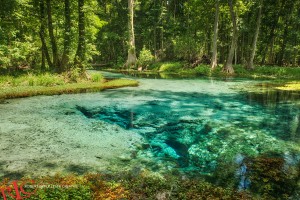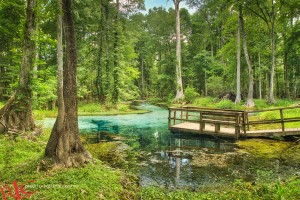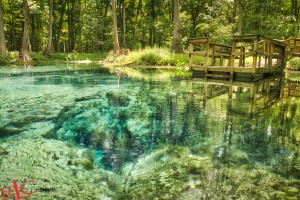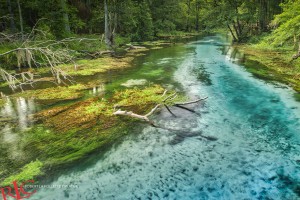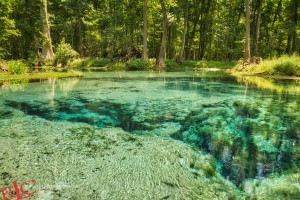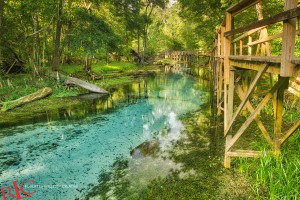When we all start out on our photography adventure one of the first lessons we learn is what time of day to shoot and the advice is always early morning or late afternoon light is always the best times to shoot for it is when the light is at it’s least harshest and will give more vivid colors and you won’t have to deal with harsh contrasts or blown out highlights. I can’t stress this enough that indeed that is always the number one rule I follow but as you know, sometimes rules are made to be broken and here’s why.
Midday sun is at it’s harshest for it is directly overhead and makes it difficult to control your exposures due to that intense light for it produces some deep contrasts and of course you can and will get blown out highlights. However, there are situations when you want this overhead harsh light and it’s the time when I take advantage of all that intense light when I go out to take landscape photographs of truly magical places when photographing Florida Springs.
The direct overhead light is the ideal time to illuminate what lies below the water which are the springs and that light will bring out the vivid hues of blue, greens and aqua colors as well as show the depth and detail of the springs that can be anywhere as a few feet below the surface to sometimes 20-60 feet below.
Since the light is directly overhead it can penetrate the water, reveal those colors and light up the cracks in the earth where the water below makes it way to the surface that is 100% pure and simply breath-taking to not only witness, but to also photograph.
If I were to follow the rule of early morning or late day, the sun would be at too much of an angle thus not resulting in the amount of color and details as photographing at high noon when the sun is directly overhead. It’s also during this time the shadows of the trees surrounding the springs don’t cast a a shadow across the water as they would when the sun is lower on the horizon.
Also to note you will want to use your tripod of course to help compose your photographs for the rules of composition most certainly applies here as also you will want to use circular polarizer as well. Since I am shooting on a tripod I also set my camera on Aperture Priority mode and shoot at small aperture to capture all the fine detail in the composition and my exposure readings are taken from the green of the surrounding trees to ensure a perfect exposure each and every time.
A circular polarizer works just as perhaps you may have a pair of polarized sunglasses where it will help cut through the glare on the water’s surface to reject any possibility of glare so you can capture what lies below the waters surface. It also serves as a nice tool to increase the colors of those blues and greens to help capture some truly amazing landscape opportunities.
The end result during this time is truly amazing and taking your time to work your subject from different angles and heights there is almost an endless amount of possibilities and you’ll be glad you broke the rule (and no, you won’t get into trouble!). Enjoy!
Robert La Follette – BPSOP Instructor
Robert Teaches: Wildlife Photography

